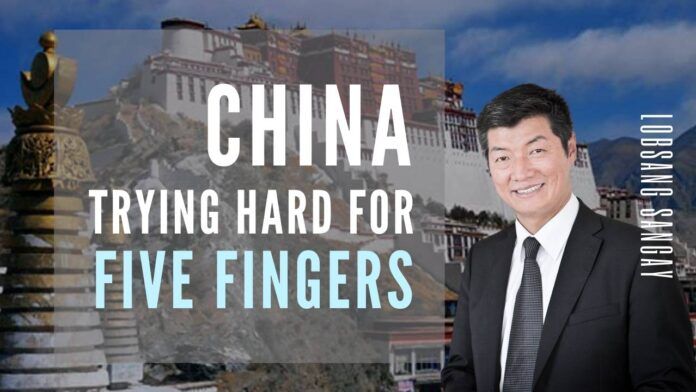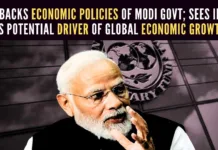
Chinese expansionist policies are a threat to the world community – Sangay
After the “occupation” of Tibet, China is now trying hard to get the “five fingers”, top Tibetan leader Lobsang Sangay accused on Friday, pointing out that Chinese expansionist policies are a threat to the world community and all must wake up to its designs. Addressing an event organized by the Centre for Democracy, Pluralism and Human Rights (CDPHR) in Delhi, he said losing Tibet as a buffer zone between India and China has cost hugely to India in terms of border problem and associated military costs.
“Tibet occupation was just the beginning. You saw the Galwan incident, how many soldiers lost their lives. Tibet is just the beginning as it is the palm, but five fingers are still out there which Chinese CPC (Chinese Communist Party) is trying hard to get,” accused Lobsang, President of the Central Tibetan Administration (Tibetan government-in-exile). Sangay studied Law at Harvard Law School and now settled in the US. He was born in a refugee community in Darjeeling, India in 1968 and received a Fulbright Scholarship to study at Harvard.
He said pluralism and diversity, human rights and freedom binds India together. “Pluralism is the foundation of India.
The Five Fingers of Tibet is a Chinese foreign policy that considers Tibet to be the palm of China’s right hand, with five fingers on its periphery: Ladakh, Nepal, Sikkim, Bhutan, and Arunachal Pradesh, and that it is China’s responsibility to “liberate” these regions. “India needs to understand, what is happening in Tibet is the blueprint and it is happening in Xinjiang and Hong Kong. Understand China and deal with it,” Lobsang said.
He said pluralism and diversity, human rights and freedom binds India together. “Pluralism is the foundation of India. Pluralism and diversity bind India together, human rights and freedom bind India together but China is bringing a more autocratic system so for Asia – development with democracy and diversity is better than the Chinese model,” he said.
Lobsang also alleged that Chinese expansionist policies are a “threat” to the world community. “Therefore the world community must wake up to its designs sooner than later. Standing against China in relation to its record on human rights violations of minorities in Tibet and Xinjiang is not in the control of one country or a small group of countries but the whole world community needs to stand in solidarity,” he said.
He further claimed that in the name of poverty alleviation, the Chinese government is employing mainland Chinese discourses in minority regions such as Tibet thereby creating an environment that might lead to endangering of Tibetan identity. “Not authoritarian policies of China but democratic policies for development that respect diversity is what the world needs,” he said.
He highlighted that India’s model of development with democracy is better than the Chinese model of development without democracy.
- Defence Minister Rajnath Singh visits Siachen. Reviews military preparedness - April 22, 2024
- Amit Shah’s shares in the Stock Market almost doubled in the past five years - April 21, 2024
- ED accused Rahul wants ED to arrest Kerala Chief Minister, while objecting to the arrests of Delhi and Jharkhand chief ministers - April 21, 2024











I agree about China’s ambitions over Tibet and India but not about India’s pluralism: India’s Judiciary and Govt enforce top down social, cultural, religious and History reengineering since 1947 till now to create a URDU-Bollywood “Hindooism”:
I said so long ago: Please read: https://www.quora.com/Why-has-India-and-China-never-negotiated-a-compromise-to-their-disputed-territory-when-China-has-resolved-its-land-border-disputes-with-all-its-other-neighbors-Russia-Burma-Pakistan-Kazakhstan-Tajikistan-etc/answer/Suchindranath-Aiyer?prompt_topic_bio=1